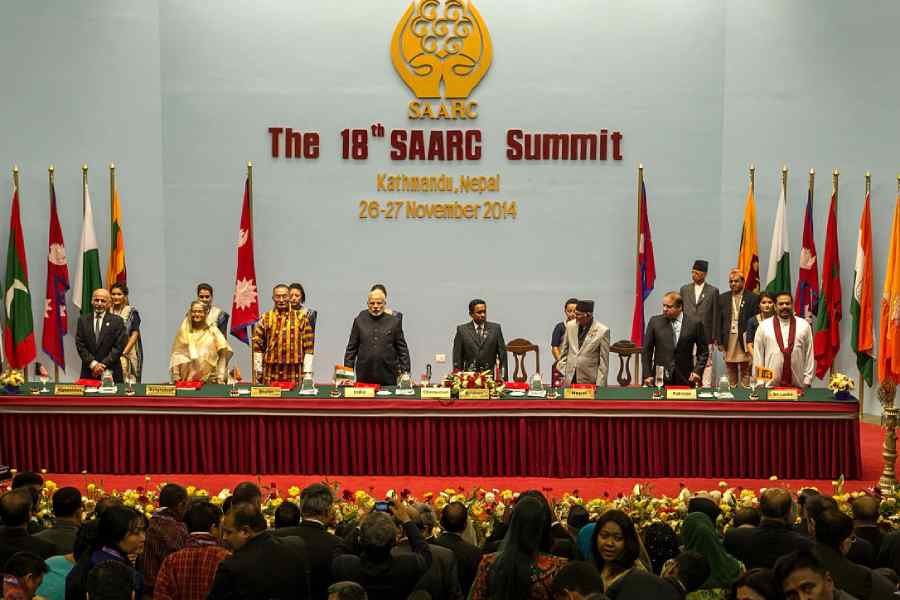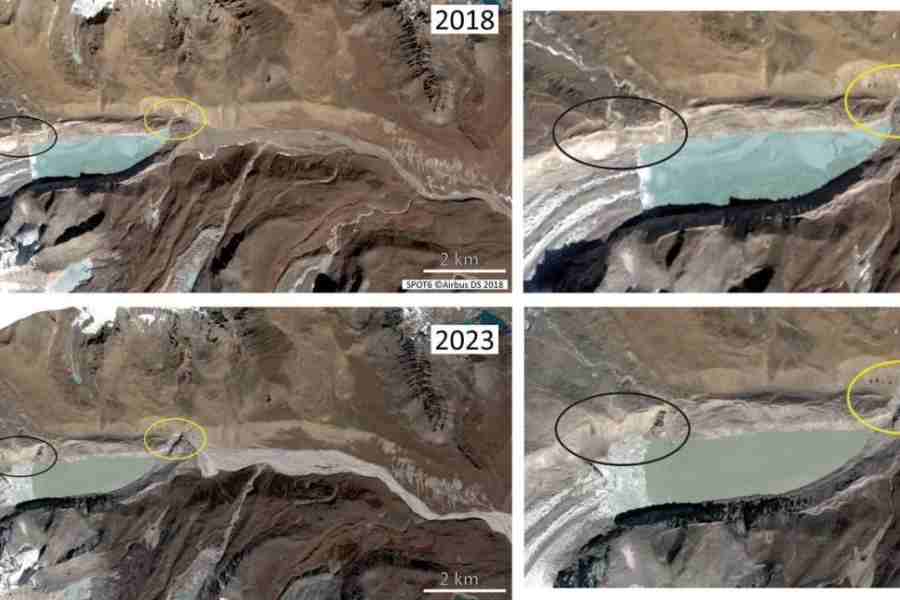For the third time in succession, the swearing-in of the new government saw an assembly of heads of government from neighbouring countries. The practice began in 2014 with the first swearing-in of Prime Minister Narendra Modi. The presence of the then prime minister of Pakistan, Nawaz Sharif, with the other SAARC leaders had amplified the optical value of that occasion.
By 2019, relations with Pakistan had deteriorated too much to invite its leader for the second swearing-in but there was an impressive turnout of others. If SAARC was the focus in 2014, 2019 had emphasised BIMSTEC and each head of government of that region was present. This includes most of the SAARC line-up barring the Maldives, Afghanistan and Pakistan.
For the third term swearing-in on June 9, all South Asian neighbours were present barring Pakistan, Afghanistan and Myanmar. The former two ruled themselves out on account of bad bilateral relations in the case of Pakistan and the absence of diplomatic relations in Afghanistan’s case. Myanmar’s internal situation was, no doubt, a factor in it not being present.
The strong representation at these three swearing-ins underscores the fact that India’s neighbourhood is important. That so many heads of government accept such invitations suggests both India’s importance and also that, with occasional exceptions, its bilateral relationships have remained strong; this is an achievement as India’s neighbourhood brims with unresolved disputes. Despite sharp downturns — as, for example, with Nepal in 2016 — relations tend to revert to stable levels. That the president of the Maldives was present on June 9 suggested normalisation after the turbulence of the past few months. If we exclude Pakistan, Indian bilateralism as a policy framework for the neighbourhood has generally been successful.
Over the past thirty-five years, bilateralism in neighbourhood relations has, however, also been supplemented with a regional approach. SAARC, since 1985, and BIMSTEC, since 1997, in particular, have provided that regional supplement. Today, though, while bilateralism appears strong, regional cooperation in South Asia seems distinctly wobbly.
The last SAARC Summit was held in Kathmandu in 2014. India-Pakistan differences have meant that the next summit, scheduled to be held in Islamabad with Pakistan as Chair, has not been held. In the absence of political ownership, the institution limps on out of past inertia but lacks energy or direction. India-Pakistan differences have ground SAARC to a halt before, but this is the longest ever hiatus.
The retreat of SAARC implied a greater focus on BIMSTEC. Barring Pakistan, Afghanistan and the Maldives, all SAARC members are also members of BIMSTEC. Therefore, what was not possible under SAARC because of frequent Pakistani obduracy could be attempted here — such was the assumption. In addition, BIMSTEC focuses on the Bay of Bengal littoral and it also acts as a link between South and South East Asia.
SAARC’s retreat into the shadows was good for BIMSTEC. For too long, it had been seen only as a rebound for SAARC — the regional organisation India turned to when it had a diminishing interest in SAARC. But BIMSTEC now faces rough weather. Its overall record of summits is not too good; its last physical summit was in Nepal in 2018 and only three other summits were held since the organisation’s founding — in 2022, BIMSTEC had met virtually. The summit scheduled for 2023 in Thailand was postponed and we will have to see whether it will take place later this year.
BIMSTEC also faces a more pressing problem — a potential hole in its heart — the erosion of internal stability in Myanmar. This comes on top of the political isolation, sanctions, and even exclusion from ASEAN meetings that Myanmar has faced since its military coup of 2021. The shrinking of the footprint of its State and the growing area controlled by insurgent armies mean that Myanmar’s capacity to act as a vital connectivity link stands eroded. The near meltdown conditions there also imply that its ability to play a meaningful role in BIMSTEC stands greatly compromised. These factors mean that BIMSTEC itself as a platform for regional cooperation is going to function at a suboptimal level especially as far as vital connectivity projects are concerned.
The larger point is that given the situation with SAARC and BIMSTEC, a major loss of momentum is evident with regard to regional cooperation in South Asia. Some would argue that this erosion of regionalism has only an optical impact where India is concerned. Why should we worry given our strong bilateral neighbourhood relationships along with a robust multilateral presence through G20, SCO, BRICS, G7 outreach and so on?
‘Why bother with regional cooperation’ is an old argument and was invoked frequently in the 1980s in India when the idea of a South Asian regional organisation had first emerged — the apprehension then also was that the smaller countries would gang up against India. Then, as now, the idea of regional cooperation was, however, appealing to many and it gathered too much traction to be ignored.
In any case, the ‘why bother’ argument is a short-sighted one. Since regional mechanisms and institutions in South Asia are a given, it is necessary that we should be in them. The glitzy summitry of major international organisations and meetings notwithstanding, our region has a pressing importance of its own for us.
There is in South Asia today a political and a narrative gap because of the erosion in its indigenous, regional cooperation institutions. Geopolitics, like nature, abhors vacuums — this is a principle we need to respect. The optical impact of India’s multilateral engagements at an international level may obscure this regional dilemma, but it certainly exists.
Addressing the emerging BIMSTEC challenge will not be easy — developments in Myanmar are governed by an internal logic which outsiders, including India, can do little to influence. With regard to SAARC, we have much greater agency and more options, but exercising these means confronting and making difficult choices with regard to Pakistan. When we do decide to move forward, it would be useful to learn lessons from Indonesia and its manner of functioning within ASEAN. Assuming a lower profile and letting others take the lead, and even the credit, is a precedent worth following.
T.C.A Raghavan is a former High Commissioner to Pakistan and Singapore










